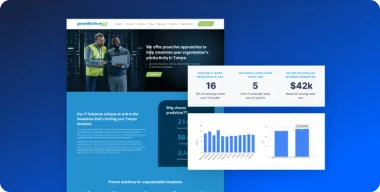Designed for engagement with friends and colleagues, social media has evolved in recent years to become a fundamental digital resource for many businesses. In a number of industries, the opportunity to actively engage with prospects and customers alike (sometimes directly on their mobile devices), is extremely powerful. However, industrial companies don’t always see those results.
Regularly posting on Facebook, Twitter, and LinkedIn doesn’t necessarily result in the kind of active, sales-driving activity you hear about from the big marketing gurus. Why is that, and how can you leverage social media for your marketing efforts?
Identifying the Core Audience for Your Marketing Activities
One of the reasons many industrial companies struggle finding success on social media is because of targeting. Social media works when your target audience is well represented. For a small custom manufacturer whose target prospects are largely procurement managers and design engineers within 300 miles, audience volume is likely very small on a site like Facebook.
Not only are your prospects unlikely to be in a buying-mindset when they log in to Facebook at the end of the day, but there just aren’t that many of them to begin with. For this reason, you need to focus your social media activities on sites where you have a significant volume of active buyer behavior and good representation.
At first, it might seem like this is always the same. Industrial buyers aren’t on Facebook or Twitter, right?
In truth, this rule varies not only for every industry, but for every company within those industries. The size of your network, number of employees, size of your sales team, and scope of potential market all impact where your audience is most likely to be.
How to Identify the Right Social Media Target
There are three steps to breaking down your social media marketing strategy and identifying where to spend your time (and possibly money):
- Identify Your Target Audience – Identify not only your target persona (engineering, procurement or management), but also the key demographics of that audience. Where are they? How big is their company? When and how frequently do they need what you offer? This will let you gauge your audience size. For local custom manufacturers, this will be much smaller than for national distributors and OEMs.
- Evaluate Social Platforms – Once you know your audience, evaluate your social media options. The big three are LinkedIn, Twitter, and Facebook. Estimate the size of your audience on these sites. It’s safe to assume that 80% will be on Facebook, but a much smaller percentage of those people will be active on Facebook when in a buying mindset. Most use it for communicating with friends and family, not for business. LinkedIn is a less active site, with fewer hours logged or individual logins per user each week, but everyone on LinkedIn is in a business mindset. Twitter sits in between, benefiting from near constant penetration and high user-counts, but a low value-per-impression rate.
- Decide Where to Focus – For most companies, the best strategy is to pick two platforms and focus all of your efforts there. Unless you can afford a full-time social media and marketing professional, these sites are just too time-consuming otherwise. LinkedIn makes the most sense for smaller custom shops while larger companies that can reach a big audience and produce regular content can benefit from Facebook. Twitter is a good secondary option for small businesses that won’t find value on Facebook.
What about the other platforms? If you have the resources and means to produce regular video content, absolutely include YouTube in your marketing plans. The reach of video content, the ability to share it on almost any platform, and the search engine benefits are numerous, but don’t start producing video just to gain those advantages – it can be costly and time-consuming.
How to Maximize Value from Social Media
Social media can and will work with the right approach to your marketing plan, but it can also be a time and money sink if you don’t focus your efforts, measure your audience, and target where they are most likely to be.
With that focus, you’ll have a better sense of when and how to post, and in turn generate far greater results from your efforts.






